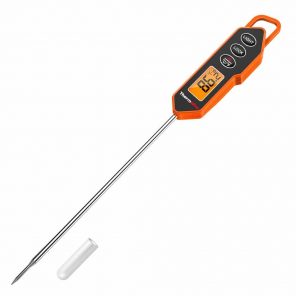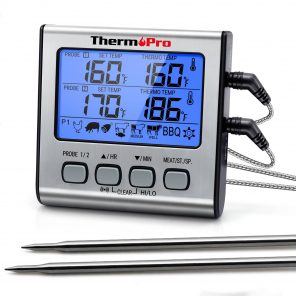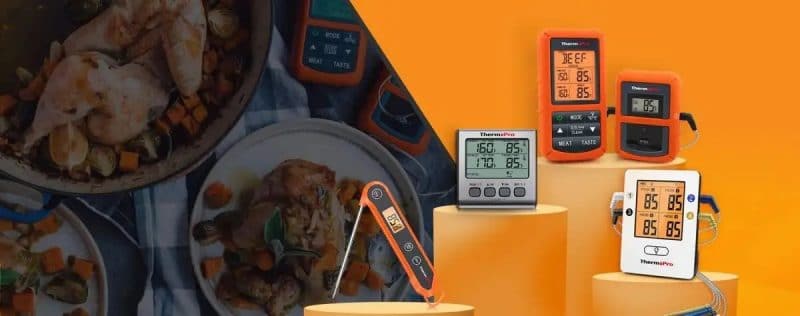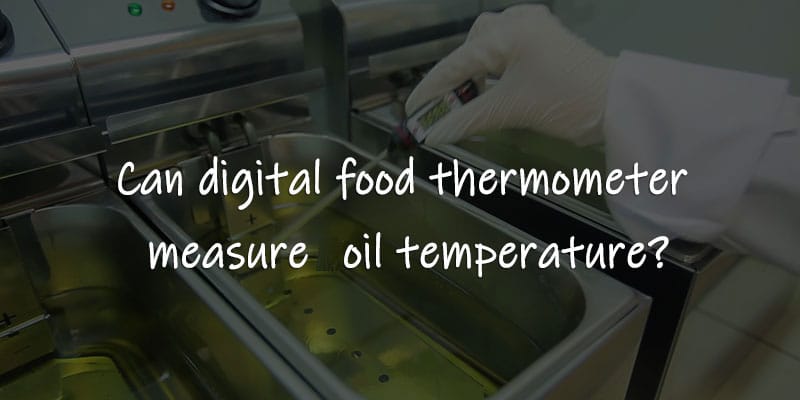The customer service team is always listening, taking notes, and quantifying complaints to ensure our products are continually improved. Due to selling directly to you, the customer, via Amazon, we can use product reviews to help us improve our existing products or help further development of new products.
Table of Contents
When it comes to making your own yogurt, it’s all about how well you work with the temperature of your culture. If it’s not warm enough, it’ll take you forever. If you’ve got it too hot, you just killed your culture.
Growing your own culture of delicious and healthy yogurt bacteria can be regarded as an exact science. But that’s only because those who’ve gone before us have given us the formula – the temperature range at each stage that works best.
For that ideal temperature, you use the trusty thermometer. There’s a range of thermometers from milk thermometers to candy thermometers. Thanks to the broad popularity of cooking and baking.
You might wonder, can you use a meat thermometer to make your homemade yogurt?
Why a Thermometer is Essential for Making Yogurt?
Now, the old ways of “feeling” for the temperature relied on how warm the milk was to the touch. You can’t really do that when you’re talking about the incubation period of culturing yogurt bacteria.
That part of culturing came from trial and error through years and even generations, and what’s been passed down is the exact preparation of the room environment needed for incubation. That’s what it took to ensure the bacteria culture is given its ideal temperature environment to thrive.
Today, we’ve got it easy. We don’t need to worry about how our room and space are set up as much as long as we’re able to ensure and sustain that ideal temperature for growing the yogurt culture.
The process of yogurt making is pretty simple. There really are just a few steps but most of these steps involve being precise with your temperature. Ergo, the need for a candy thermometer.
Can You Use a Meat Thermometer for Yogurt?
Well, the tool tells the temperature. So, why can’t you use it for culturing yogurt?
Here’s the only thing you need to be aware of when it comes to thermometers. If it can be inserted in milk or yogurt and it allows you to read temperatures that cover the range temperatures for yogurt culturing, it works. Yes, you can use such a thermometer. And meat thermometers do cover the range we need for making yogurt.
What you want is to get an instant-read thermometer. Just make sure it’s not touching the bottom of your pan or container when you’re measuring. Keep the probe of the thermometer away from any surface. That’s when it’ll be able to read the temperature of the liquid it is in.
And milk thermometer?
Yup, that includes milk thermometers or dairy thermometers. It’ll certainly be useful for the initial heating needed to break down the protein in milk, the cooling down and finally, the long incubation period. You don’t need to have the best dairy thermometer for yogurt culture. It’s enough they can identify temperatures accurately. Their built-in clip certainly is useful, holding the thermometer to the milk or yogurt while clipped at the edge of its container.
Can you use a candy thermometer for yogurt production? You certainly can. Though candy thermometers are made to withstand very high temperatures, as long as it can read the range you need to make yogurt, it certainly works.
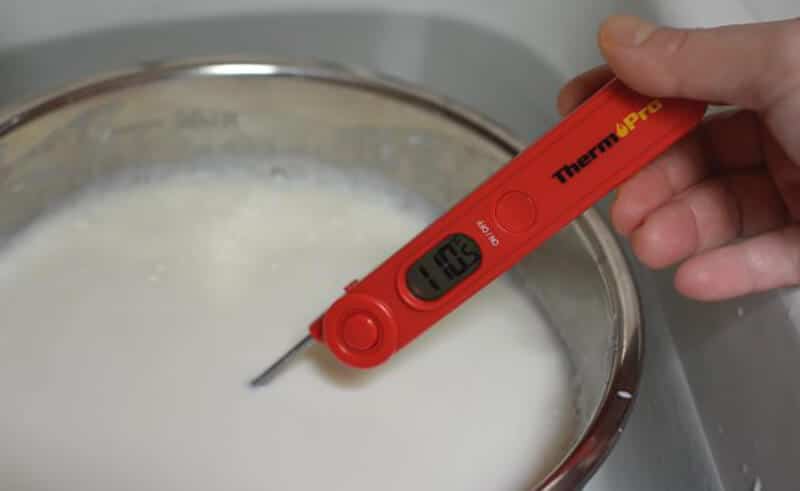
Temperature Science for Making Great Yogurt
Great tasting yogurt boils down to this – growing the yogurt bacteria in their ideal happy temperature. And in each step in the process of yogurt culture, the intended temperature is key. You’ve got to be on point with temperature when you need to bring it up and when you need to bring it down. And you’ll need to keep that specific temperature range for a good number of hours. That’s the challenge.
There are basically four phases in the process of yogurt making. There are other preliminary things you also need to do but the most crucial phases are what you do to the main ingredients – milk and the ultimate milk-yogurt blend that what counts.
The first of these phases is the heating of the milk. Whether the milk comes from whole milk or from powdered milk, you’ll need to heat them up to 180ºF or 83ºC. This phase has denatured the protein in the milk. It’s the phase that also helps your yogurt to set well in its finished state. What you’d notice at 180ºF is that the milk starts to show signs of steaming, right above its surface.
If you want your yogurt to get thicker, you may turn down the heat to low after reaching the target temperature of 180ºF and letting it simmer for 5 minutes.
The second phase involves cooling down the milk to 110º or 44ºC. Getting the temperature down is needed in preparation for incorporating an older yogurt community into the milk as a seed culture. This is often done faster by placing the saucepan with your milk into cold water. Stirring the milk helps cool down the temperature even faster.
The third phase is just the incorporation of yogurt into the milk, effectively making a blend.
The last phase is incubation. This involves keeping your yogurt mixture at 104ºF to 109ºF. That’s 40ºC to 43ºC for 6 to 8 hours. This last phase is the most challenging part of the process. The best way to go about doing this is to use a reliably accurate thermometer. You may use one that has a clip-on, keeping its thermal probe end in the yogurt throughout. Or you may use an instant-read thermometer to check intermittently, perhaps hourly.

Which Kind of Digital Thermometer is Suitable for Making Yogurt?
A digital thermometer is a digital thermometer. You can have one digital thermometer that can indicate a wide range of temperature than another. You can also have one brand that’s more reliable and durable than another. Features may also differ between different digital thermometers.
Perhaps what makes better sense is asking what feature and model would you prefer? Are you interested in a yogurt thermometer with an alarm?
What would be a very useful feature for a thermometer used in growing yogurt culture is the thermometer clip. Though, there’s an argument in using an instant-read thermometer, allowing you to just get a temperature reading in one yogurt sample within a minute then sample another almost immediately after.
1. LCD Display
A thermometer with an LCD display makes it so easy to read the temperature. It’s actually indicated for you without you having to guess or estimate like what you would have to do when you use a gauge type thermometer. However, you’ll need to make sure you’ve got a ready battery available for the day when it drains. A gauge type thermometer doesn’t need batteries and it’ll always work.
2. Wide Temperature Range
A wide temperature range allows you to use that same thermometer for your yogurt and for any other cooking or baking needs. However, you need to get an accurate reading of the thermometers, unless it is digital, the temperature reading you get won’t be as accurate as one with a narrow temperature range specifically made.
3. Longer Probes
With a longer probe, a thermometer allows you to read temperature sampling deep into a container. You may not need a thermometer with a longer probe if you’re using a regular saucepan or jar for incubation.

How to Control Temperature During Yogurt Making with Meat Thermometer
A meat thermometer is a tool you use to identify and read the temperature. You can’t really control the temperature with it. However, you can readily respond to what’s indicated by cooling down your culture or warming them when they need it.
If you need to warm your yogurt culture, perhaps due to the winter season, you may keep them in your oven and turning on its pilot light to keep them warm. A hot water bath in an enclosed space will also help a lot though you’ll have to replace it after a period to keep the space warm such as in an insulated cooler. Setting your yogurt culture at a higher elevation in a slightly heated room might also help.
And if you need to warm your culture in summer, you may again use the cooler with ice packs.
Advantages of ThermoPro Digital Thermometer for Making Yogurt
If you’re looking for ease of use, accurate and fast readout on a thermometer for making your yogurt, you may want to look into the ThermoPro Digital Thermometer. Here are the reasons they might make your yogurt culture project a breeze.
- Large digital readout makes your temperature reading accurate and fast. You get your reading in 4 to 6 seconds.
- It’s got a long probe at 5.3” long. It’s usable for both shallow and deep containers, allowing you to use it for practically all situations.
- Wide temperature range from negative 58ºF to 572ºF or negative 50ºC to 300ºC, giving you a wide variety of use.
- 3 Year Warranty gives you a long guarantee you’re getting something that truly going to be useful to you.
A thermometer is a very important tool in growing your yogurt culture. Take your time to consider the kind you’d be comfortable using to make your own homemade yogurt. It’s a tool you’d appreciate as you make yogurt making part of your lifestyle.
-
ThermoPro TP01H Digital Meat Thermometer with Long Probe
$10.99 $10.99Rated 4.45 out of 5Add to cart -
ThermoPro TP-17 Dual Probe Digital Meat Cooking Thermometer
$31.99 $31.99Rated 4.96 out of 5Add to cart

